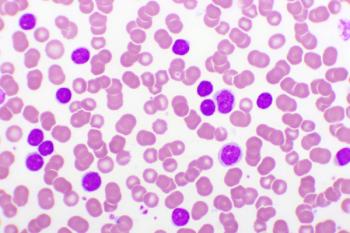
CVS Health’s 2021 Health Trends Report Spotlights Virtual Care, EHR Optimization
Citing 2021 as the year of the pharmacist, this year's CVS Health’s Health Trends Report discusses pressing issues for pharmacists to monitor, including availability of COVID-19 vaccines to communities nationwide, as well as integration of telehealth and behavioral health services.
With COVID-19 vaccines now being administered in
Cited as the year of the pharmacist by
“Pharmacists practicing at the top of their licenses are advocates who listen to patient concerns, educate on available options and connect patients with solutions to improve their health,” said Montgomery. “That has particularly held true during the COVID-19 crisis, given the immense role our pharmacists play in providing accessible, community-based care. We hope to make that an even stronger pillar of our health care system.”
In addition to vaccine demand, the pandemic has brought several pressing issues for pharmacists to address, particularly availability of telehealth and behavioral health services. As noted in the report, US telehealth visits increased by more than 150% compared with the year prior, with more than 20% of all medical visits in 2020
Although attention is placed highly on televisits, researchers note that consumer adoption of apps and wearables also greatly increased in 2020. With older consumers placing more reliance on wearables to monitor their health, the report says that the next challenge for the evolving virtual care ecosystem is integration of this data in patient care.
“A 2019 survey of health care practitioners found that only 5% of them made use of data from their patients’ wearable devices, many citing compatibility issues with electronic health records (EHRs),” said researchers.
By better integrating patient-generated data into EHRs, researchers say that providers can better track patient health and even flag issues that would warrant physician follow-up.
This pursuit to optimize EHRs was further addressed by the report as authors say that over the past decade, EHRs have “contributed to exhaustion and burnout among health care providers, increased costs for software and maintenance, and presented interoperability issues.”
In improving EHR interoperability, several innovations in 2021 for software and integration were spotlighted.
On April 5, 2021, the
For CVS, its patient portal, MyChart, has become a chief tool amid the pandemic to provide patients with COVID-19 test results. These patient portals will serve to provide patients with their EHR data to share with providers, as well as help navigate appointments and information about health care costs.
“Pre-pandemic studies suggest these kinds of patient portals may even boost adherence and offer more ownership of the treatment journey, though how that might relate to clinical outcomes isn’t yet clear.”
To align fragmented health data across multiple, often incompatible systems, Epic and Cerner, the 2 largest EHR companies, have launched initiatives aiming to facilitate safe digital sharing of data. Notably,
Although vital in ensuring that all patient needs are known and addressed, greater data transparency in EHRs will be a greater workload for providers. To prevent potential cases of exhaustion and burnout that may come from more time spent in front of computers, Sharon Vitti, president of MinuteClinic and senior vice president of CVS Health, cautioned that while alerts may help notify providers about risks to a patient, too many beeps can make the user tune it all out.
“When we first built our system, we built in a lot of alerts to support evidence-based medicine, and kept adding them because we wanted to make sure we were creating safety nets around new clinical issues.” said Vitti.
Now, Vitti says that CVS Health has conducted user group surveys and worked with Epic to streamline their system through implementing workflow efficiencies and instituting a focused review system for every new alert.
“EHRs still have a long way to go before they deliver on all of their promise. But these and other good ideas—such as add-ons that incorporate social determinants of health and can, for instance, help a clinician remember to work a patient’s food insecurity into their diabetes plan—may turn the tide,” said researchers. “In the coming years, the EHR may at last become the intuitive, unobtrusive and everyday tool that changes medicine for the better.”
Newsletter
Stay ahead of policy, cost, and value—subscribe to AJMC for expert insights at the intersection of clinical care and health economics.












































